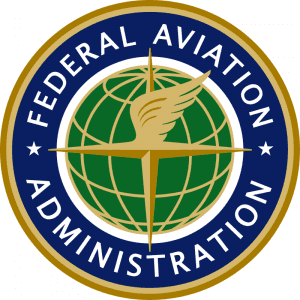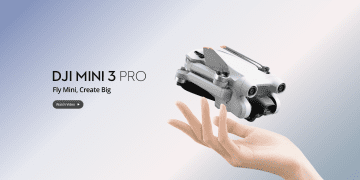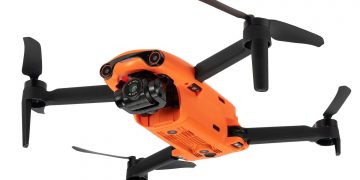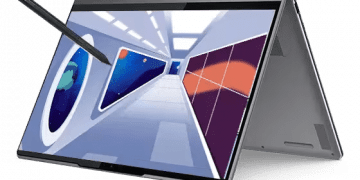Drones have rapidly evolved from being mere toys to sophisticated devices used for a variety of applications, from aerial photography and surveying to public safety and even package delivery. As these unmanned aerial vehicles (UAVs) become more integrated into everyday life, the need for regulation becomes increasingly important. In the United States, the Federal Aviation Administration (FAA) is the governing body responsible for ensuring that drones are operated safely and responsibly.
The FAA’s regulations are designed to mitigate risks and ensure the safety of all airspace users, including commercial airlines and private aircraft, as well as people and property on the ground. These rules are not just guidelines; they are legal requirements that every drone operator must adhere to. Failure to comply can result in hefty fines, legal action, and even imprisonment in extreme cases.
Whether you’re a hobbyist looking to capture stunning aerial shots, a real estate agent aiming to showcase properties from unique angles, or a public safety official using drones for search and rescue missions, it’s crucial to understand the FAA’s rules and regulations. These laws cover various aspects, such as the weight of the drone, the speed at which it can fly, how far it can go from the operator, and the altitudes it can reach, among other things.
In this article, we’ll delve into the key points you need to know about drone laws in the USA, from weight and speed limitations to distance and altitude restrictions and even the purpose of your flight. So, before you take to the skies, let’s make sure you’re fully informed and in compliance with all the necessary regulations.
Safety Guidelines:
Register your drone: All drones weighing between 0.55 and 55 pounds must be registered with the Federal Aviation Administration (FAA).
- Fly within visual line of sight: Keep the drone within your direct line of sight at all times.
- Respect airspace restrictions: Stay away from restricted airspace, such as airports, national parks, and government facilities.
- Avoid flying over people: Do not fly your drone directly over people or crowds.
- Fly during daylight hours: It’s recommended to fly your drone during daylight hours and in good weather conditions.
Licensing Requirements:
- Recreational Drone Pilots: Pilots need to register their drones with the FAA and follow the safety guidelines mentioned above.
- Commercial Drone Pilots: Pilots must obtain a Remote Pilot Certificate by passing the FAA’s Aeronautical Knowledge Test.
WHERE CAN I FLY MY DRONE IN THE USA?
Weight Regulations for Drones
Drones Under 55 Pounds
These are governed by the FAA’s Small Unmanned Aircraft Systems (UAS) Rule, commonly known as Part 107. This category often includes consumer drones used for aerial photography, real estate drone photography, and recreational flying.
Drones Over 55 Pounds
These drones require special FAA certifications and are often used for industrial applications like agriculture drone spraying, heavy payload deliveries, and large-scale surveying.
Speed Limitations for Safe Drone Operation
While the FAA doesn’t explicitly state a speed limit for drones, it’s crucial for drone operators to maintain a safe and controllable speed. This is especially important for those involved in fast-paced drone activities like drone racing, high-speed aerial videography, or drone-based sports coverage.
Distance and Visual Line of Sight (VLOS)
Maintaining Visual Line of Sight (VLOS): Whether you’re a hobbyist drone photographer or a professional drone surveyor, it’s mandatory to keep the drone within your visual line of sight or have a visual observer next to you. This is crucial for safe drone operation in public spaces and avoiding potential drone collisions.
Altitude Restrictions for Drone Flights
Controlled Airspace Altitude Limits
For those involved in urban drone photography or commercial drone videography near airports, it’s essential to adhere to FAA-authorized altitudes in controlled airspace. Authorization can be obtained through the Low Altitude Authorization and Notification Capability (LAANC) or DroneZone.
Uncontrolled Airspace Altitude
In Class G uncontrolled airspace, drones must fly at or below 400 feet. This is particularly relevant for rural drone surveying, agricultural drone monitoring, and recreational drone flying.
Purpose of Drone Flight and Applicable Rules
Recreational Drone Flying
If you’re flying drones for personal enjoyment or amateur drone photography, you must take the Recreational UAS Safety Test (TRUST) and adhere to FAA-recognized Community-Based Organization (CBO) guidelines.
Commercial Drone Operations
Governed by Part 107, commercial drone activities include real estate drone videography, industrial drone inspections, and drone-based event coverage.
Public Safety and Government Drone Use
Special toolkits and FAA contacts are available for drone use in public safety operations, such as drone-assisted search and rescue missions or disaster response.
Additional Key Regulations
- Remote ID Requirements: Starting from September 16, 2023, drones will be required to broadcast Remote ID information. This is a crucial update for all drone operators, including those in drone delivery services and drone journalism.
- FAA Drone Registration: Whether you’re into recreational drone flying or commercial drone services, registering your drone with the FAA is mandatory. Always carry proof of this registration when operating your drone.
Navigating the Complex Landscape of U.S. Drone Regulations
In today’s rapidly evolving technological landscape, drones are no longer just a novelty or a gadget for enthusiasts. They have become essential tools in various industries, from real estate and agriculture to public safety and media coverage. As drones continue to proliferate in both recreational and commercial spaces, understanding and adhering to the Federal Aviation Administration’s (FAA) regulations become increasingly critical.
For more information, you can visit the FAA’s official website for recreational flyers.
Resources:
If you found this comprehensive guide on drone laws in the United States valuable, you might also be keen to explore drone regulations in other countries. We’ve got you covered with in-depth guides on drone laws in the United Kingdom and Australia. Whether you’re looking to capture the historic architecture of the UK or the stunning natural landscapes of Australia, understanding the local drone laws is essential for a safe and legal flying experience. Don’t miss our detailed articles on Drone Laws in the UK and Drone Laws in Australia to ensure you’re well-informed, no matter where your drone takes you.













